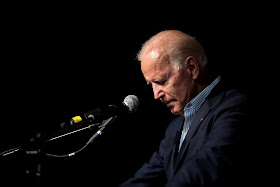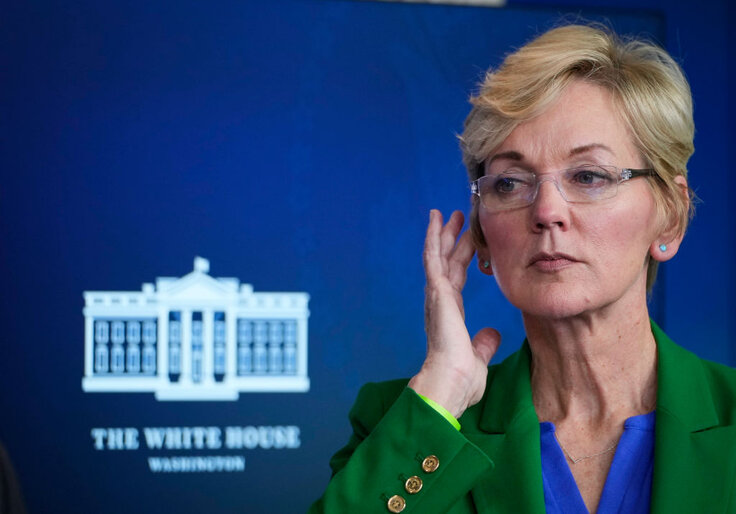It’s not a new point to make, to say that ideology is a substitute for religion, a paltry and clumsy and culture-ruining substitute. But it is also a substitute for any coherent system of thought that addresses the realities around us, full of bold and healthy things that resist reduction. One boy hanging over the rail of a bridge to spit into the creek defies every feminist who ever lived. One farmer staying up in the dead of night to see to his cow in labor puts the collective to shame. But how can you tell when you are ruled by that special kind of madman called the ideologue?
I’ll give one sign. It’s more than that the answers to all questions are decided beforehand. It’s that there are many questions you are not permitted to ask.
You could not come up with a question about reality or about the Christian faith that Thomas Aquinas, in his Summa Theologica and his Summa Contra Gentiles, did not ask, providing stronger arguments against his positions than his opponents then or now could themselves express. Such was the saint’s immense confidence. But though the ideologue may appear confident, something in him, or some guardian spirit whispering the truth into his ear, tells him that his Kremlin is built of sticks and chalk. The next breeze may send the whole thing tumbling down. Hence his terror of questions.
Let me give a few examples.
“If the world is growing a little warmer, why should we assume that that is a bad thing? Wouldn’t it shift many millions of acres of naturally rich soil into the category of the arable, in Canada and Russia? And elsewhere in the temperate regions, wouldn’t crop yields increase?”
I don’t know the answer to that question. My point is that it is an obvious question to ask, and no one is asking it. Vikings used to grow grain on the coasts of Greenland. We have testamentary and forensic evidence to prove it. Were those bad centuries for Greenland?
“Does the presence of women in the military, especially in combat units, make the army more effective—more likely to win wars quickly and decisively, with least risk to life and limb? How is that possible, when the women are exceeded in strength and speed by mere teenage boys?”
That question was asked, I recall, more than 20 years ago, but it was evaded, and there is no way that you can ask it in the current military without risking your job. If you are a public figure and you ask it, you will be held up to national disgrace as a misogynist. Yet the question is obvious. You can have your own politics. You cannot have your own physics.
Or your own human nature. Military camaraderie is general and public and belongs to the small group as such; eros is exclusive and private. Eros is more powerful—for good, in the right circumstances, and for destruction, in the wrong. So then, what happens to morale when eros is introduced into a small group that should be bound by camaraderie? Don’t ask.
You turn to immigration. How many are the questions you may not ask! “How many immigrants should we admit every year? What is their effect upon the wages of the working class? Are we to be absolutely indifferent to the culture of the immigrants? Are immigrants from certain parts of the world going to be less likely than others to think of themselves first as Americans?” These are obvious questions. They admit of different answers in different circumstances and at different times. They are questions about real conditions. It seems impossible to have any immigration policy if you do not ask them, unless the policy is simply come one, come all. But if, when you ask one of these questions, you are branded as a racist, then you are dealing with that rejection of reality that characterizes the ideologue.
“If gender is a social construct, how come every human culture in the history of the world has constructed manhood and womanhood in the same ways?” Don’t ask. Or, better, “If there are no intrinsic differences between men and women, what sense can it make to say you are a man in a woman’s body, or a woman in a man’s body?” You’re hurting me—stop, or I’ll report you to the authorities. “If it is wrong for your neighbor to talk to your child about sex without your knowledge, why is it to be celebrated when the teacher does so to 20 children at once, saying the same things?” Or, “What special knowledge about sex can school teachers possibly have that gives them the capacity, let alone the right, to direct children in these most delicate matters?”
Sticks and stones can break my bones, but a word or a roll of the eyes can send the ideologue racing to the police. We are not permitted to ask, “What bad cultural habits have American blacks gotten into that hurt their chances to prosper?” They are the same bad habits that the white working class have gotten into, with similarly bad results. Who is to blame? Suggest that, human nature being what it is, there will be a lot of blame to spread around, and you will be called a racist anyway, even though you have said nothing that does not apply to everybody.
“Aren’t some cultures more interesting than others, and more to be studied and emulated, in that they give man a broader field of action? Isn’t the Athens of Socrates a greater culture—not morally better, but greater—than that of pagan Iceland, or that of post-Christian America?” Ask it in a graduate school seminar and kiss your career goodbye.
“If you are tolerant, doesn’t that mean that you easily tolerate what you perceive as bad, that you are hard to offend, that you give other people the benefit of the doubt? Then how can tolerance thrive when everybody is watching everybody else for the least offense?” Siberia, here you come.
We should be free to ask every question. I am not an ideologue of democracy. Universal suffrage? Let’s talk about it. Laissez-faire economics? Built upon utilitarian principles, which I reject. Laissez-faire sex? Built upon hedonistic and solipsistic principles, which I also reject. Separation of church and state? How about separation of government and school? Zoning? Where, when, whom, and why? Compulsory schooling? Whom does it help? Whom does it hurt? Eminent domain? For exactly what purposes? Energy use? Why do we not build nuclear plants? If we are on the brink of climatic catastrophe, why does no one call for curfews? Why do I not see air conditioners on the sidewalk, to be picked up for garbage?
Let’s argue. Let’s address realities. If you are so touchy that you feel every argument is a threat to your existence, you do not belong in the discussion. You belong in a padded cell. The rest of us don’t.









